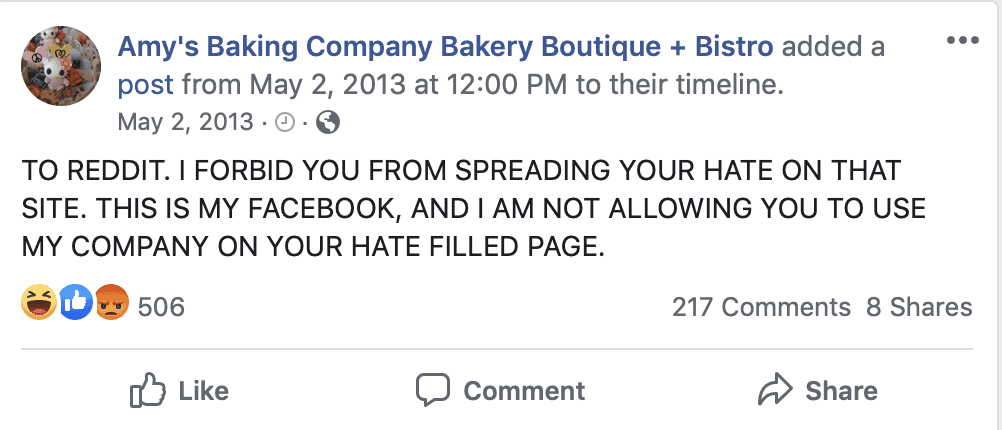A public relations crisis can strike at any moment, and it’s important to be prepared to handle it in an effective and timely manner. Whether it’s a negative product review, a social media backlash, or a more serious issue like a data breach, a PR crisis can quickly spiral out of control if it’s not handled properly. In this post, we’ll explore 10 ways to handle a PR crisis, including tips on how to assess the situation, communicate with the public, and mitigate damage to your reputation. By following these guidelines, you’ll be able to effectively navigate the challenging waters of a PR crisis and come out on the other side with your reputation intact.
What is a PR Crisis?
A public relations (PR) crisis is a situation that poses a significant threat to an organization’s reputation, and can occur as a result of a variety of factors. Some common examples of PR crises include negative media coverage, social media backlash, scandal, and celebrity crisis. These range in form from critical news articles, viral videos, damaging exposés to negative comments or unethical and illegal activities.
13 Strategies For Handling a PR Crisis
1. Assess the situation
One of the first steps in handling a PR crisis is to gather as much information as possible about the crisis and determine its scope, severity, and potential impact. This will help you understand the nature of the crisis and what actions need to be taken.
2. Establish the response team
Ideally, your company will already have an organized response team for PR incidents. If there isn’t a team in place, however, you should make your selections quickly.
Evan Nierman, the founder of Red Banyan, notes that it’s crucial for companies to “react fast and speak with one voice.” It looks unprofessional when several people are chiming in with contradictory statements. Nierman recommends creating a response team that encompasses employees and external parties, such as a PR agency, familiar with the media’s PR tactics.
Each spokesperson must be well suited to their assigned role. For example, you could have a highly-intelligent, incredibly compassionate executive who doesn’t do well on camera. Presentation plays a significant role in managing PR crises.
3. Gather all the facts
We can’t stress this enough: You must get all the facts surrounding the situation. If you’re working with incomplete and inconclusive information, you’ll likely make the situation worse.
When Delta Airlines experienced an aircraft malfunction in Atlanta, they initially claimed they were suffering an electrical outage. However, Georgia Power claimed the cause was “an equipment failure.” Chris Matyszczyk wrote about confusion in Inc.:
“When Delta’s computers went down, it blamed a ‘power outage.’ This seemed odd. Why would a power outage in Atlanta cause mayhem across the globe? Those Georgians must have quite some power. This forced Georgia Power to slide onto Twitter and offer a delicate elucidation: ‘#Delta experienced an equipment failure overnight causing their outage. We are working closely w/ Delta as they make repairs.’ Ergo, the supposed power outage was actually a failure of Delta’s computer systems. Obfuscation via your PR department isn’t a good look.”
Though you may feel rushed to give an explanation, taking the time to identify the real cause of an issue is better for your company in the long run.
When dealing with a PR crisis, it’s best to avoid making statements that subsequently turn out to be false. Instead, commit to being transparent. Share the information you have and the actions you are taking to get more answers.
Today’s fast-paced news habits can put extreme pressure on a company to respond too quickly. Take the time to structure your response in the most effective and honest way possible.
4. Strategize
In the immediate aftermath of a crisis, you will be inundated with requests for information. Hence, it’s crucial for everyone on the response team to know what, specifically, they are responsible for.
5. Mitigate damage
Once the crisis has been assessed and a plan of action developed, the next step is to take steps to minimize the damage caused by the crisis. This could include implementing any necessary corrections or changes to prevent the crisis from escalating.
6. Notify all personnel of strategy
Anyone with any kind of relation to the organization could be asked about a crisis, so it’s imperative for every team member to be on the same page. Even those who may not be directly contacted by the media should be aware of the facts, the strategy, and all other relevant information. This can help prevent any future backtracking.
7. Craft an intentional message
After gathering all the facts and agreeing on response team roles and responsibilities, you can draft your response. Be as transparent and open as possible, stating what you know about the situation and what you plan to do.
Related post: Build a Successful PR Strategy in 2021
8. Identify and address the affected parties
In addition to notifying all your employees, stakeholders, and business partners, the company should make direct contact with their customers and the media. Reaching out to the media can help you stay ahead of the situation. Again, stick to the facts, and avoid spin.
9. Modify your digital marketing strategy
Social media channels are effective tools when dealing with a PR crisis. Think of your Facebook, Twitter, and LinkedIn pages as mediums for “virtual press conferences.” Send out an email to everyone in your database. Update the copy on your website’s homepage and put a pause on unrelated campaigns and content. Make sure your statements have been approved by legal and choose your words carefully.
10. Be open (and polite) on social media
Social media is often at the epicenter of a professional blunder. As the Tweets and private messages start rolling in, it’s important to remain calm and focused. It may be tempting to delete negative comments here and there, but users will notice and draw even more negative attention to your brand. Respond politely and clearly. This is not the time to go AWOL on social, either.
In 2013, Amy’s Baking Company made headlines when Gordon Ramsay cut their collaboration short on “Kitchen Nightmares.” In response, the bakery took to social media. The following is a screenshot of one their Facebook statuses:

This reads as lashing out. It makes much more strategic sense to plan a passionate yet thoughtful response rather than try to mitigate what can appear to your audience as strident, accusatory, blaming, and angry.
Compare this reaction to KFC’s after their “chicken shortage” in the UK:

The brand managed to turn their crisis into a social marketing success.
11. Keep an eye on the situation
Don’t rush to move on and sweep things under the rug. Practice social listening to follow what people are saying about your brand online.
12. Try to learn from the crisis
How could the event have been prevented? How well did your team respond to the situation? What improvements can your company make this month? This year? How do you plan to move forward?
13. Keep stakeholders informed
It is important to keep all stakeholders informed throughout the crisis and be transparent and honest in your communication with them. This includes keeping employees informed about the situation and the steps being taken to address it, as well as communicating with customers, partners, suppliers, and other key audiences. This will help to build trust and credibility, and ensure that stakeholders are aware of the situation and what actions are being taken to resolve it.
5 actions to avoid in the face of a PR Crisis:
In the face of a PR incident, it’s important to avoid certain actions that can make the situation worse and cause further damage to your organization’s reputation. Here are some common actions to avoid:
1. Not having a crisis plan in place
Not having a plan in place for responding to a crisis can lead to confusion and indecision, which can make the situation worse. It’s important to have a crisis management plan in place and to regularly review and update it.
2. Criticizing the opposing party
Even if someone is being completely dishonest, you shouldn’t lead with censures. Set your emotions aside and prioritize being factual.
3. Pulling a “no comment”
Regrettably, the phrase “no comment” suggests misconduct and culpability. The expression can give the media more leeway to fabricate. If you truly lack an adequate amount of information, be honest, and promise to provide updates as soon as you are able to.
4. Respond too quickly or slowly
Again, you don’t want to give an impulsive and overhasty response, but you also can’t let too much time pass.
5. Focusing solely on the short-term
In a crisis, it’s important to focus on both short-term damage control and long-term reputation repair. Focusing solely on the short-term can result in neglecting the long-term consequences that a crisis may have on your organization.
Final Thoughts
It’s important to remember that every PR crisis is different, so the response will need to be tailored to the specific situation. The main objective is to minimize the damage caused by the crisis, and mitigate the impact on your reputation and the relationships you have with your customers and clients.
A PR crisis isn’t the end of the world. In fact, it could even bring necessary issues to light. Like preparing for a natural calamity with foresight and calm, having a solid plan for any potential PR issues is always a safe bet.
Related post: Public Relations for B2B Tech Companies: In-house or Outsource?







